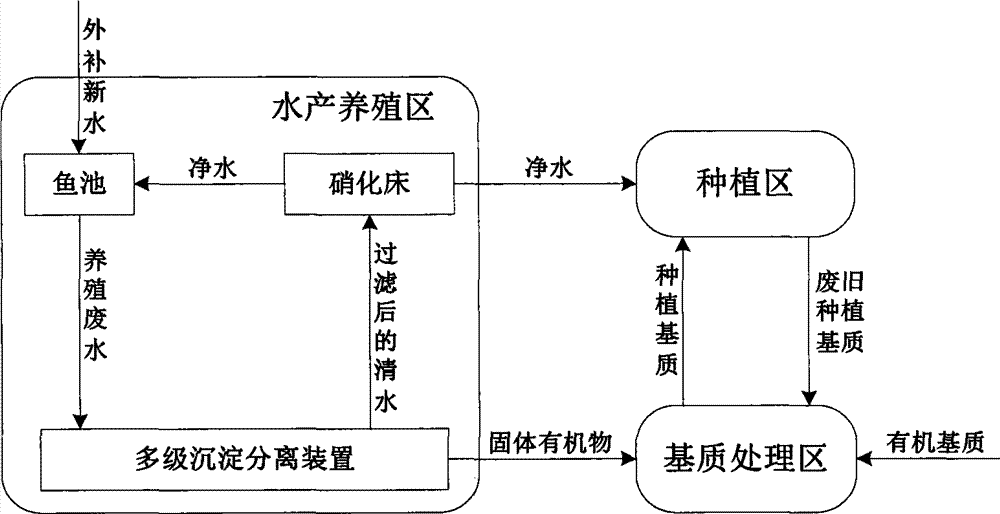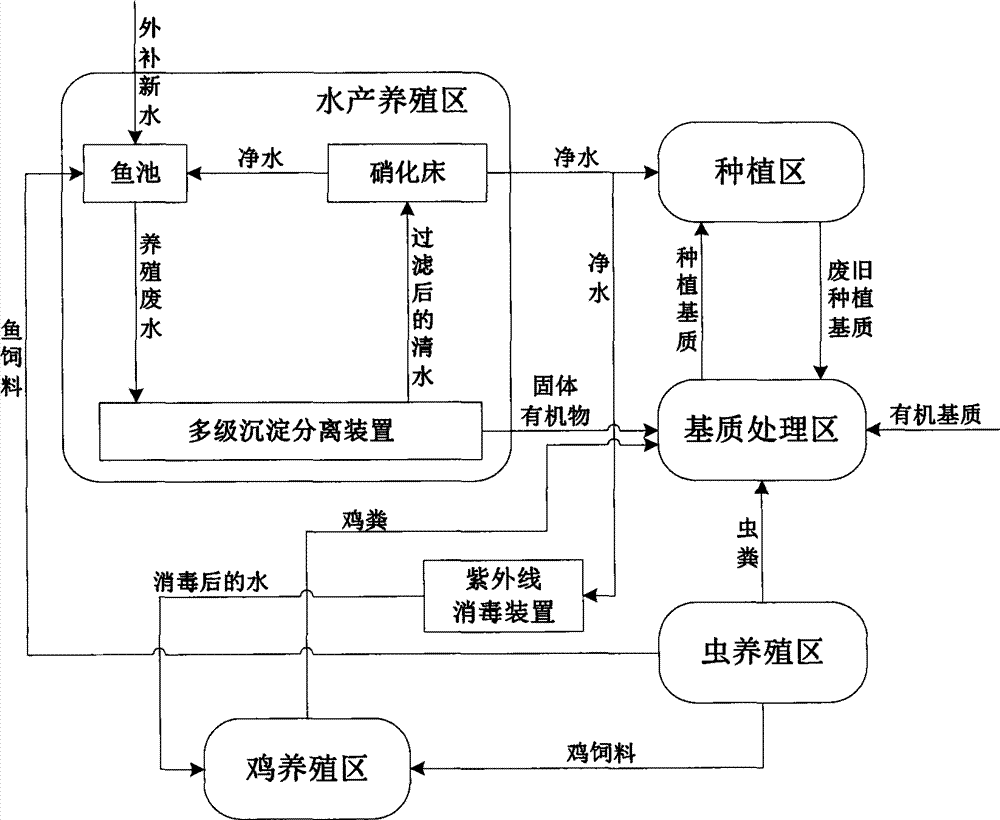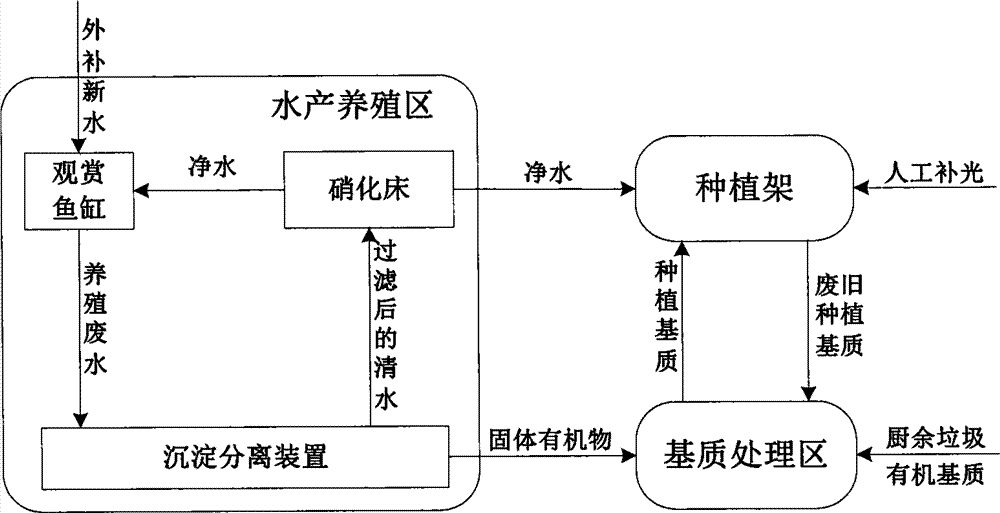Organic matrix fish and vegetable disjunctive symbiosis mixed planting and breeding system
A technology of separation and symbiosis and mixed planting, applied in poultry farming, fish farming, agricultural machinery and equipment, etc., can solve problems such as differences in external environmental conditions, low system security, water loss, etc., to achieve quality and yield. Improve and solve the effect of high nutrient concentration and reduce input cost
- Summary
- Abstract
- Description
- Claims
- Application Information
AI Technical Summary
Problems solved by technology
Method used
Image
Examples
Embodiment Construction
[0020] The present invention will be further described below in conjunction with the accompanying drawings and specific embodiments.
[0021] Such as figure 1 The first embodiment shown is a mixed planting culture system in which fish and vegetables are separated and symbiotic with organic substrates, including an aquaculture area, a substrate treatment area, and a planting area, wherein: the aquaculture area includes fish ponds, multi-stage sedimentation and separation devices and Nitrification bed; organic matrix will be added in the matrix treatment area; the culture wastewater in the fish pond enters the multi-stage sedimentation and separation device for filtration, and the solid organic matter (such as fish feces, feed residue, etc.) separated by precipitation enters the matrix for treatment zone is added as organic fertilizer to the organic substrate in the substrate treatment zone for biological treatment and composting fermentation to produce planting substrates for p...
PUM
 Login to View More
Login to View More Abstract
Description
Claims
Application Information
 Login to View More
Login to View More - R&D
- Intellectual Property
- Life Sciences
- Materials
- Tech Scout
- Unparalleled Data Quality
- Higher Quality Content
- 60% Fewer Hallucinations
Browse by: Latest US Patents, China's latest patents, Technical Efficacy Thesaurus, Application Domain, Technology Topic, Popular Technical Reports.
© 2025 PatSnap. All rights reserved.Legal|Privacy policy|Modern Slavery Act Transparency Statement|Sitemap|About US| Contact US: help@patsnap.com



